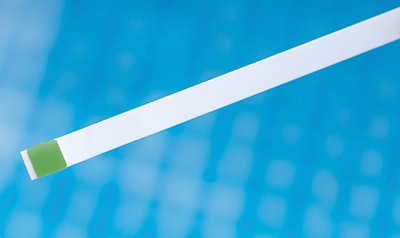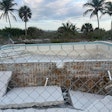
Dr. Stan Pickens has written an excellent scientific research paper on this topic, which can be viewed by clicking here.
Establishing good pool water chemistry standards helps provide guidance for proper water care, and helps ensure that pool water is safe for swimmers. But some standards are overly restrictive, and the pH range is one of them. For example, there should NOT be a mandate for closing down swimming pools when the pH is 8.0 to 8.5.
Starting 60 years ago, some pool industry chemists (incorrectly) suggested that a pH of 8.0 and higher makes chlorine ineffective and not safe to swim in. Not true. Just 1 ppm of chlorine in pool water with a pH of 8.5 and zero CYA contains more active chlorine (HOCl) than needed to kill algae. Note that the common HOCl/OCl/pH percent charts are irrelevant and misleading for pools containing CYA.
Today, thanks to the work of pool water chemists, it is now understood that CYA, not pH, more significantly affects chlorine efficacy. But the idea persists that when pool water contains CYA, a pH above 7.8 significantly prevents chlorine from sanitizing, and that raising the chlorine level will not help overcome the effects of higher CYA levels and improve sanitizing effectiveness. That is false.
One way to explain this is to consider that water with3 ppm of chlorine at pH 8.5 has more killing power than 2 ppm of chlorine at pH 7.5 when both contain 50 ppm of CYA. That should help illustrate that a pH above 7.8 does not prevent chlorine from properly sanitizing pool water. There is also more (HOCl) killing power with 4 ppm of chlorine with 80 ppm of CYA than there is with 2 ppm of chlorine at 50 ppm of CYA.
RELATED: Adjusting pH and Alkalinity May Not Be as Simple as You Think
Now, back to the issue of the industry's mandate to close pools when the pH is above 7.8. Why? We now know that the 7.8 maximum pH was based on incorrect science and assumptions. We know that tap water, serving millions of people, has pH levels above 8.0 and up to 9.3. The always restrictive EPA allows a pH up to 8.5 for drinking water.
Some believe that there is greater eye irritation at a pH of 8.0 than at a pH of 7.0. That belief has been debunked by a peer-reviewed study showing that lowering the pH from 8.0 to 7.0 increased the frequency of eye irritation. That study also stated that raising the pH to 9.0 did not increase eye irritation.
There are other reasons that maintaining a slightly higher pH can be somewhat beneficial and should be allowed.
We know that the (natural) pH of water containing carbonate alkalinity of at least 60 ppm will want to rise to 8.0 – 8.2, and up to 8.5 if the alkalinity is 140 ppm to 180 ppm. Interestingly, the pH at those alkalinity levels does not want to go higher than that.
This likely means that millions of pools across the country often have a pH above 7.8 without sanitation issues. Therefore, if the LSI is within the balanced range, why fight that tendency of pH to rise above 7.8, continually adding acid (to lower the pH) and then adding sodium bicarbonate to replace the lost alkalinity that is consumed by the acid?
Let's also consider that one prominent pool chemistry instructor, the late Jock Hamilton, started promoting the concept and benefits of maintaining the pH from 7.8 to 8.2 back in the 1980's. Many pool service techs have maintained pH above 7.8 on tens of thousands of pools without reports of disease, algae outbreaks, eye irritation or cloudy water resulting from high pH. Therefore, why restrict those who have experienced success and prefer the ease and increased stability of maintaining a pH level of up to 8.2 and 8.3?
Why sound a false alarm to pool owners that their pool water is out-of-balance and unsafe when it is not? That simply undermines service techs unfairly.











































